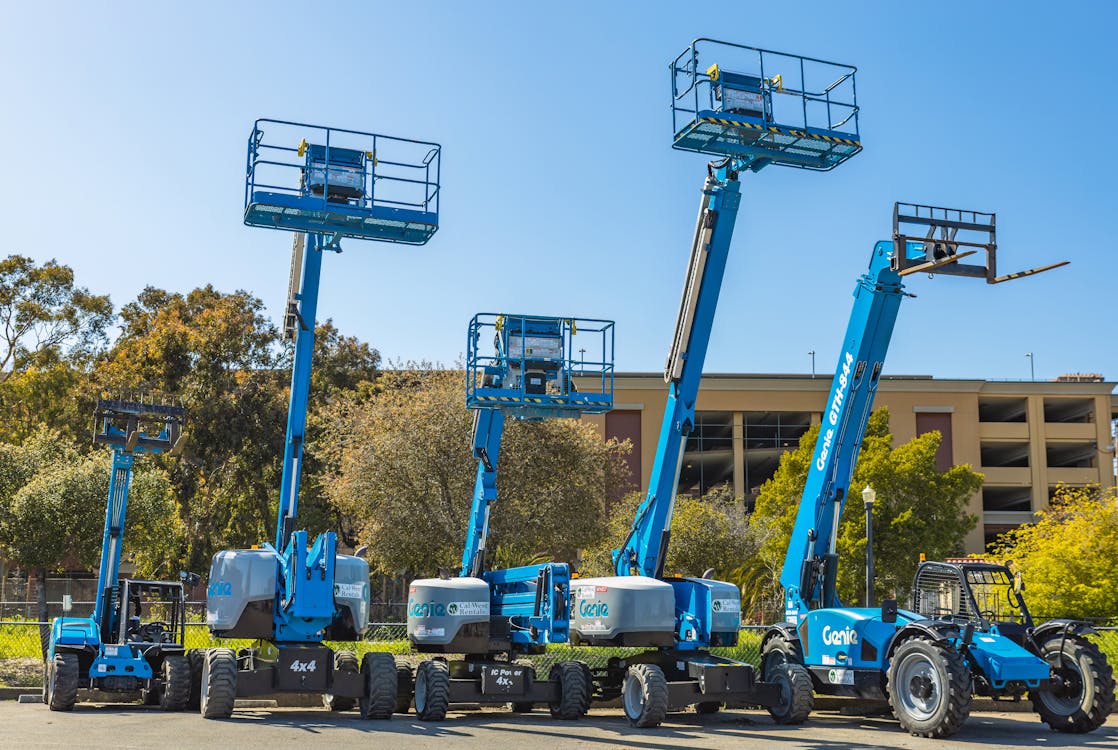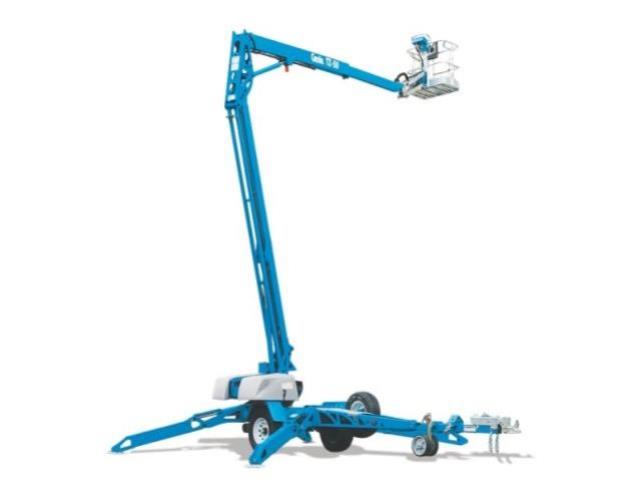
Genie boom lifts are essential tools for accessing high and hard-to-reach areas safely and efficiently. But in order to make the most of these versatile pieces of equipment, you need to have a handle on the basics.
In this blog, we discuss the 5 integral aspects of Genie boom lift functioning you need to know before operating a genie boom lift–from its parts to its application and more.
1. Components of a Genie Boom Lift
To operate Genie boom lift effectively, you first need to be familiar with its components. Here’s a breakdown of its main parts:
- Boom: The boom is the heart of the Genie lift. With a series of sections that telescope outwards, the boom can extend to various heights in order to provide you with the reach you need for various tasks.
- Drive System: The drive system includes either an electric motor or a combustion engine. It’s responsible for moving the lift and powering the hydraulic mechanisms that extend the boom. Electric models tend to be better suited to indoor use because of their quietness and lack of emissions; on the other hand, diesel or gas engines have the power needed to perform heavy lifting tasks outdoors.
- Platform: The platform is where the operator stands. It’s designed for stability and safety, with non-slip surfaces and ample space for movement.
- Controls: The Genie boom lift control panel (which is usually located on the platform) includes joysticks, switches, and buttons the operator can use to move the boom and the platform.
- Safety Equipment: Genie boom lifts are equipped with various safety features, including harness attachment points, emergency stop buttons, and alarms, that alert operators to potential hazards. Guardrails on the platform help prevent falls, and safety sensors disable certain movements if unsafe conditions are detected.
2. Genie Boom Lift Applications
Genie boom lifts are designed to tackle a wide array of tasks in both indoor and outdoor environments. When equipped with non-marking tires, these lifts have the maneuverability to be effective in indoor applications, such as in warehouses, shopping centers, and large facilities, without causing damage to soft or delicate surfaces.
In outdoor scenarios, Genie boom lifts demonstrate their robustness and adaptability. When fitted with regular rough terrain tires or more aggressive tread options, they can navigate a variety of ground conditions from muddy fields to gravelly paths. These tires are designed to handle softer surfaces without sinking or causing disruption, making them perfect for use in landscaped areas or over sensitive turf ground conditions where minimal impact on the environment is required.
Whether performing construction tasks, maintenance work, or complex installations, Genie boom lifts provide the necessary reach and strength, all while protecting the ground beneath them.
3. Safety Procedures for Operating Genie Boom Lifts
Operating Genie boom lifts safely is imperative to maintaining a secure worksite. Here are some essential safety procedures every operator should follow:
- Inspect the lift for any signs of wear or damage before use.
- Check all fluid levels and make sure that all controls are operational.
- Ensure that all loads are balanced and securely fastened.
- Verify that the load does not exceed the lift’s rated capacity.
- Always be aware of overhead obstacles and ground conditions.
- Keep a clear line of sight in all directions while operating the lift.
- Follow the specific operational and safety guidelines provided by the manufacturer.
- Regularly refer to the operator’s manual for detailed instructions on the lift’s features and limitations.
4. Maintenance Guidelines for Genie Boom Lifts

Properly maintaining a Genie boom lift is the key to clean performance over the long-term. A major benefit of renting construction equipment from Rentco is that we do the maintenance for you. But, if you decide to purchase your own Genie lift and plan on taking care of the maintenance yourself, there are a few things you need to know.
Number one is to check for any signs of wear, damage, or hydraulic leaks before and after use. It’s also important to clean the lift thoroughly and remove debris or dirt that could impair its functions. Areas around joints and moving parts should be kept free from build-up.
Part replacement is also an aspect of maintenance. Worn or damaged parts should be replaced immediately to prevent malfunctions during operation. Adhering to maintenance guidelines extends the life of the lift, promotes smooth operation, and minimizes downtown and, ultimately, repair costs.
5. Troubleshooting Common Issues
Like any other machine or piece of equipment you use, Genie Boom Lifts run into issues every now and then. Here is some advice on how to address some of the more common issues that spring up:
- Examine the Hydraulic System: Regularly inspect the hydraulic system for leaks and any signs of wear on the hoses and seals.
- Inspect Electrical Connections: Carefully examine all electrical connections within the lift to confirm they are tight and secure.
- Evaluate Controls: Run a comprehensive test on all controls, including steering levers, joysticks, and brakes.
If you encounter any issues when using a rented genie boom lift, don’t wrack your brain trying to solve the problem yourself — just give us a call. Our staff is trained to troubleshoot and resolve issues and they will find a solution that allows you to get back to your project as soon as possible.
Rentco – The Equipment You Need When you Need It
With these 5 things about Genie boom lifts in mind, you’re ready to make the most of their versatile capabilities and get your projects done right. At Rentco we offer high quality equipment rental options with flexible and cost effective rental terms. We take all the hassle out of the process and allow you to focus on your work.
Ready to get your Genie boom lift project underway? Contact Rentco today to make an equipment rental request!